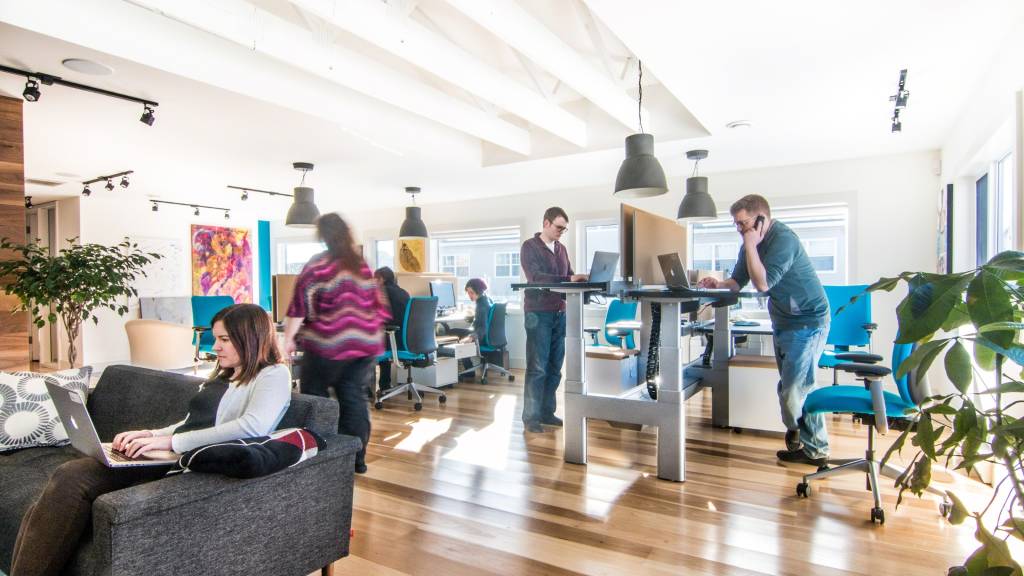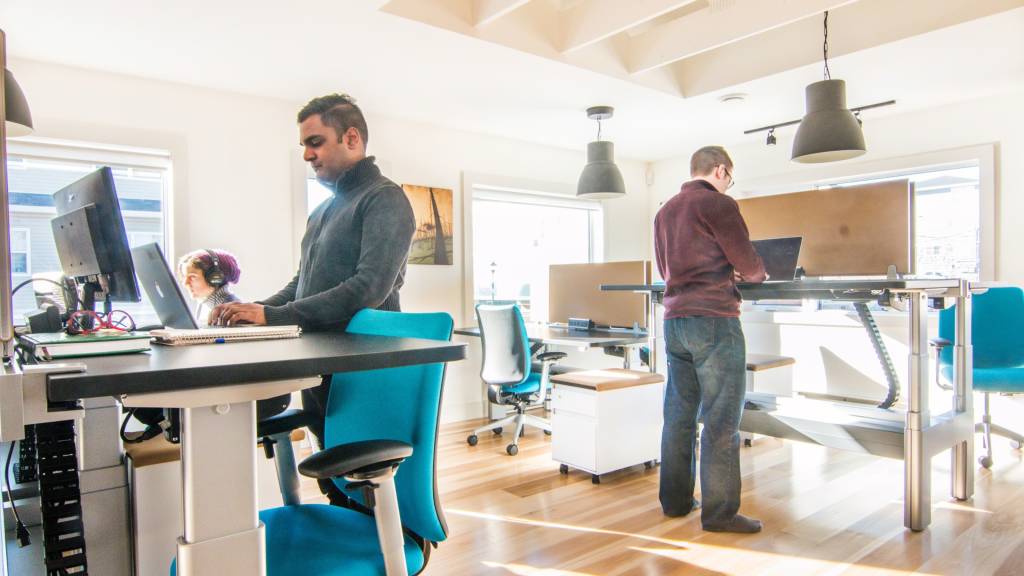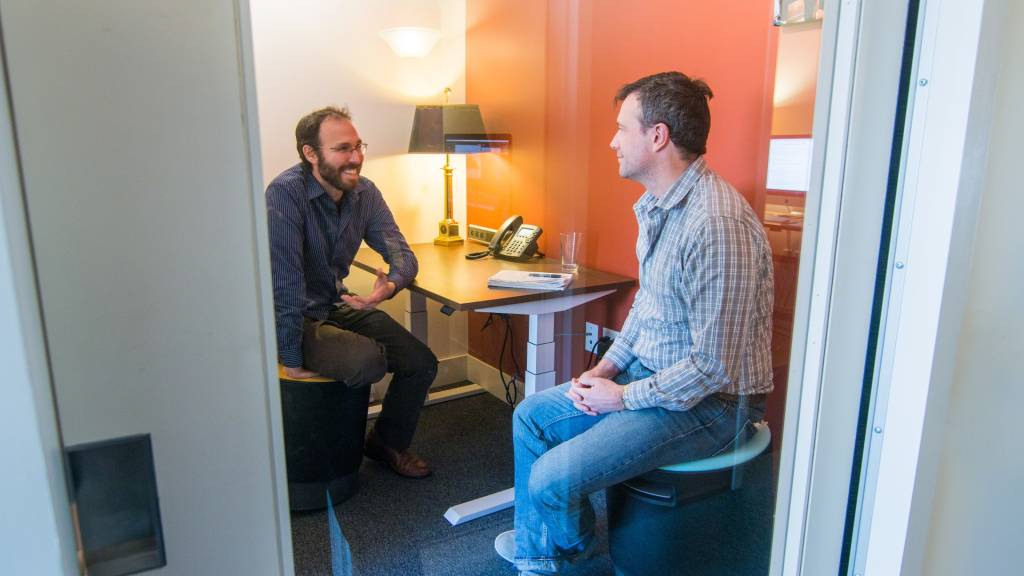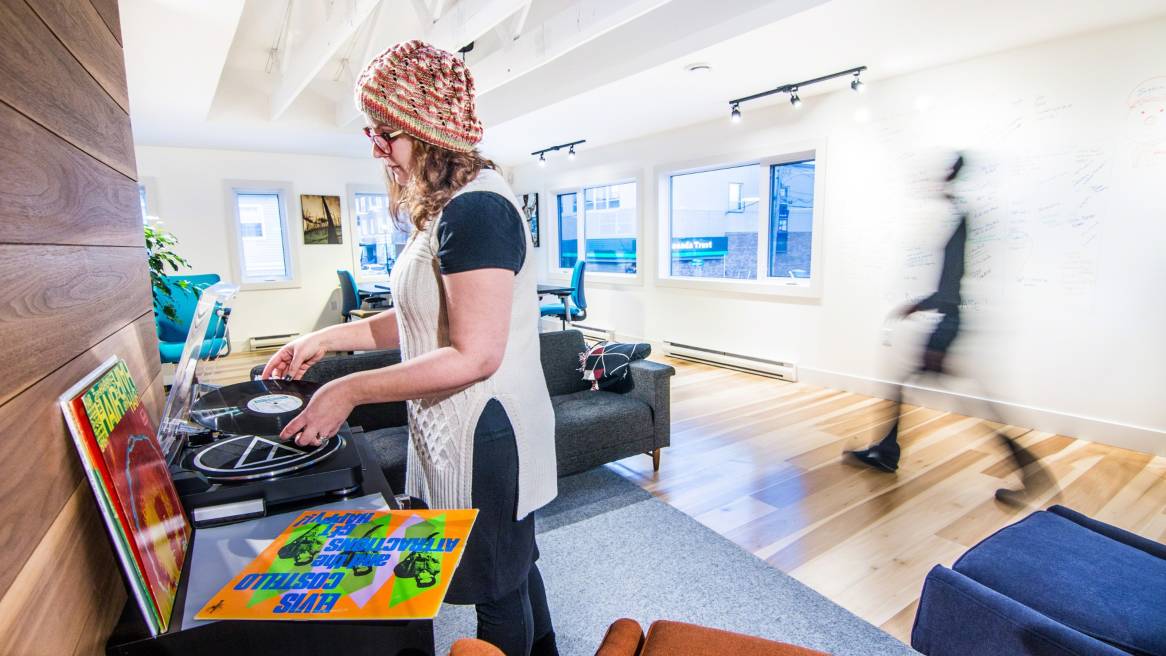Journeyman
Workplace fuels a filmmaker's creative culture
Can a workplace elicit creativity?
Mathew Welsh not only believes so, he depends on it to contribute to his company’s success.
His firm, Journeyman Film Company, in Halifax, Nova Scotia, creates visual communications “to build prosperity and understanding through the art of storytelling,” as he describes it.
After eight years in business, the last four working in a heritage house, Journeyman needed a change. Offices once considered “funky” had grown stale and inefficient; a visiting interior designer told Welsh, “this is not the right space for you.” The turning point came when a potential new hire turned down a job at the company because she thought the workplace was unprofessional.
“We were in a rut. We needed a place to not only do great work, but to challenge conventional thinking, to change the way our clients approach video communication. We needed a space that invites people to think differently.”
Welsh did his homework. He consulted the staff, read extensively, interviewed colleagues about their workplaces, and worked with a local architect and builder. Convinced of the need for the workplace to contribute to his business success, he purchased a small commercial building in Dartmouth, across the harbor from Halifax, and built a workplace to fuel the creativity of his organization.
Creative commons

The space design of the new office springs from Journeyman’s purpose as creative content originators. They need different kinds of spaces for various types of work: editing video, project work sessions, client meetings, writing, planning –a diverse confection of work processes from individual to collaborative.
Then there’s eating. Journeyman’s early videos were edited in Welsh’s home kitchen. Even today, editing and other post production work are lengthy processes that benefit from occasional respite and refreshment. Food and drink are definitely a sign of welcome, of course. So Welsh had the kitchen placed at the entrance to the company’s new workplace.
It’s an unexpected surprise for many visitors, but that’s how Journeyman operates. “Random, spontaneous conversations are part of the creative process. And since we don’t have assigned workspaces, we move around. It invites people to shift and change their energy, their perspective, even their posture. That’s all important to being creative.”

Work occurs everywhere in this office of just 2,800 sq. ft. Individual workspaces are unassigned and open to all. Height adjustable worksurfaces not only assure a good fit for different people, but also encourage changes in posture and perspective. Even the collaborative buoy stools are height adjustable and light enough to move to any workspace. “We have to go beyond the assumptions we perceive in any situation, whether it’s a creative brief, the subject matter, or an industry. To get past assumptions takes a lot of work. We have to challenge ourselves, challenge each other. If you shift physically during the day, it helps foster the process.”
Space that plays different roles
The central open workplace connects with a phone room, breakout space, a living room-style lounge area. Low key, relatively quiet collaborative work happens in the open work area. Solo focused work, or teamwork that’s loud and freewheeling, takes place in the enclosed spaces. The open area also doubles as an all-hands meeting space. “Every space,” says Welsh, “has a slightly different character to it.”
This workplace embodies the company: a team of spaces that play different roles for a team of professionals who shift continually from one project and process to the next. “As you move through different parts of the space, the energy changes, and that’s just like what happens in a good story, and in a good edit,” says Welsh.

“The work we do is creating content, and good content has variety. It changes the energy, it takes you on a journey. So our workplace not only echoes our work, it supports and inspires our work.”
“Our workplace not only echoes our work, it supports and inspires our work.”
Magnet, AmbassadorStoryteller
Welsh says the workplace helps strengthen the creative culture at Journeyman. “Exploring ideas, changing energy, being mindful —these are all concepts in our conversations, and our space has allowed a different way of talking about these things.”
This workplace has had an equally powerful impact in the market. “It’s become a talent magnet for us, an ambassador for us, and it tells our story. Everyone’s very impressed when they come in. The space speaks well of our brand, our values, how we do things.
“People who work with us, whether it’s employees, contractors or clients, know that when they come to Journeyman, it’s a place that’s warm and inviting, focused, real, authentic. It’s a place to get creative work done.”
CREDITS
Architecture and Design: Abbott Brown Architects
Builder: Bruno Builders Inc.
Dealership: Atlantic Business Interiors


